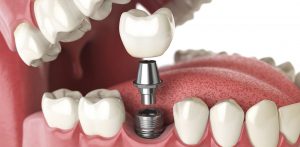 Dental treatment using Implant-supported prostheses, which are frequently used for people who have no teeth but have sufficient bone tissue, is an effective treatment method that allows edentulous patients to perform their chewing function correctly and effectively and has two options, using fixed or removable prostheses. In treatment using implant-supported prostheses, which is an effective method for patients with partial tooth loss, Implant-supported fixed prostheses are applied as a single crown or a full prosthesis, and removable prostheses are applied to patients who have no teeth in their mouth.
Dental treatment using Implant-supported prostheses, which are frequently used for people who have no teeth but have sufficient bone tissue, is an effective treatment method that allows edentulous patients to perform their chewing function correctly and effectively and has two options, using fixed or removable prostheses. In treatment using implant-supported prostheses, which is an effective method for patients with partial tooth loss, Implant-supported fixed prostheses are applied as a single crown or a full prosthesis, and removable prostheses are applied to patients who have no teeth in their mouth.
A very safe and comfortable procedure is performed by using these prostheses that are placed on the implant fixed to the jawbone. It is also an economical treatment option. In implant-supported prostheses, there is no need to use an implant for each tooth. It is sufficient to fix the implants to the places of the missing teeth in the key points of the jaw for effective application of prostheses. Although it varies from patient to patient, 6 implants may be sufficient for an edentulous patient.
Although it is a comfortable application, partial swelling may occur in the gums during application of implant-supported prostheses. This is quite normal. Swelling in gum goes away within few days after application. Since anesthesia is used in the implant application, pain and feeling of pain are minimized during application.
Metal-supported or more aesthetic full ceramic systems can be used in implant-supported prostheses, as in other dental procedures.
For detailed information about implant-supported prostheses, your questions about our treatments and your appointment requests for our clinic, you can contact us.
Implant-supported prostheses, and also other dental treatments, are the applications planned individually for each patient and the protocol is determined in line with the needs of the patient. Therefore, the prices for implant-supported prostheses may vary according to the number of implants required by the patient and the type of prosthesis.

